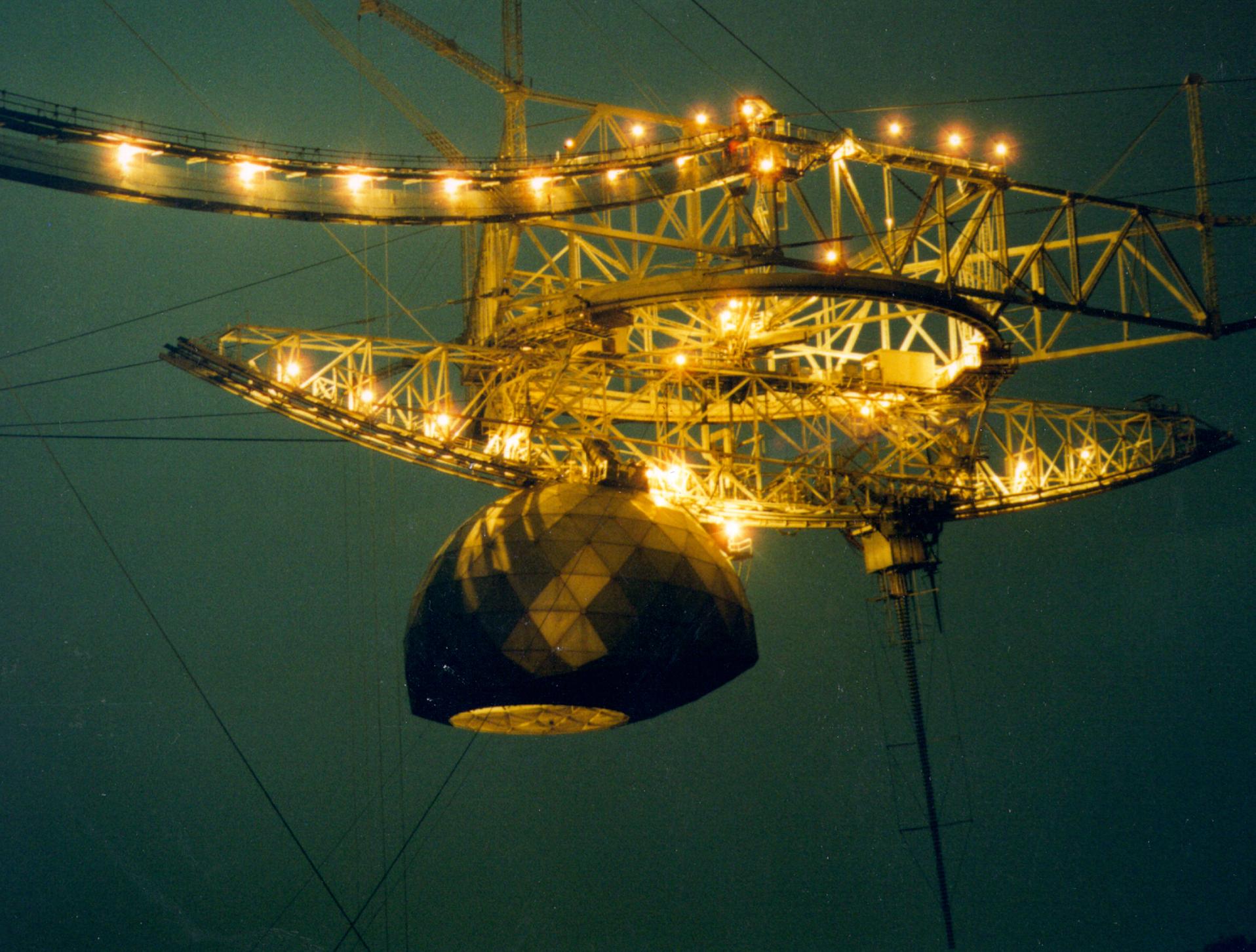
1 minute read
Goodbye to Arecibo
from Contact 06
For more than 50 years, Arecibo explored the cosmos from Puerto Rico, making countless discoveries and inspiring great affection from the astronomical community. Sadly, 2020 marked the end of the road for this giant of radio astronomy.
First came the breakage of two of the cables supporting Arecibo’s 900 tonne instrument platform, which housed the telescope’s receivers above that iconic 305m dish. The damage was extensive enough for the US National Science Foundation, which operated Arecibo, to announce that the telescope would be decommissioned, as it was deemed too dangerous to attempt repairs. Less than two weeks later, on 1 December, the instrument platform came crashing down too, completely destroying the telescope.

Aerial view of Arecibo's 305m dish.
Arecibo Observatory and NAIC.
It was a sad end for a facility with such an impressive scientific legacy. Among its list of achievements, Arecibo was used to discover the first binary pulsar system, a major breakthrough supporting Einstein’s theory on the existence of gravitational waves, which went on to be awarded the Nobel Prize for Physics in 1993. The telescope is also credited with the first discovery of an exoplanet orbiting a millisecond pulsar in 1992, and the first detection of a repeating fast radio burst in 2016. These are all areas of science that the SKA will probe further, so as a pathfinder Arecibo really did pave the way for the next generation of facilities.
In-between all the science, Arecibo also made appearances on the silver screen, featuring in the James Bond film GoldenEye, and the sci-fi movie Contact (a particular favourite of many radio astronomers). It also helped to inspire many young scientists, as became clear when news of its planned decommissioning sparked a flood of reactions on Twitter under the hashtag #WhatAreciboMeansToMe.
“A giant has fallen,” says SKA Director-General Prof. Philip Diamond. “It is very sad to see a superb facility bow out in this way. This will be a difficult time for the Arecibo staff, our thoughts are with them.”

The instrument platform which housed the telescope's receivers.
Arecibo Observatory and NAIC.

Archive image of Arecibo from 1963
Arecibo Observatory and NAIC.










